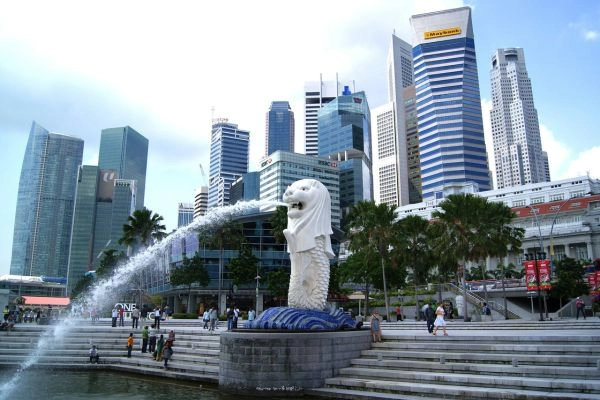How to Start Scope 3 Emissions Planning in Singapore

With mandatory climate disclosures on the horizon in Singapore, most companies are already preparing to track Scope 1 and Scope 2 emissions. But it’s Scope 3 emissions across your value chain that’s often the most complex, and the most significant.
While Scope 3 reporting is not yet mandatory in Singapore, it’s coming. Listed companies will be expected to start disclosing Scope 3 data from FY2026, pending industry readiness. And large non-listed entities won’t be far behind.
The time to start preparing is now.
What Is Scope 3?
Scope 3 emissions are the indirect greenhouse gas emissions that occur outside your company’s direct operations but are still linked to your business activities. While Scope 1 covers emissions from owned or controlled sources (like company vehicles), and Scope 2 relates to purchased energy (like electricity use), Scope 3 covers everything else across your value chain, both upstream and downstream.
This includes emissions from:
- The materials and services you purchase
- The transportation and distribution of goods
- The use and disposal of your products by customers
- And even employee travel and commuting
The GHG Protocol outlines 15 distinct categories of Scope 3 emissions, making it the broadest and often the largest source of emissions for many companies. The most common and high-impact categories include:
- Purchased Goods and Services – Emissions from suppliers producing the materials, components, or services you buy.
- Capital Goods – Emissions from producing long-term assets like machinery, buildings, or vehicles.
- Fuel and Energy-Related Activities – Indirect emissions from fuel production, even if the fuel is used by the company.
- Upstream and Downstream Transportation and Distribution – Emissions from logistics providers moving products to and from your company.
- Waste Generated in Operations – Emissions from waste processing and disposal.
- Business Travel – Flights, taxis, hotels, and other travel activities not directly controlled by your company.
- Employee Commuting – Emissions from daily travel to and from work.
- Use of Sold Products – Emissions from how customers use your product (e.g. energy-consuming appliances).
- End-of-Life Treatment of Sold Products – Emissions from the disposal or recycling of your products.
- Franchises, Investments, and Leased Assets – Emissions from entities where you have influence but not operational control.
Because Scope 3 emissions reach across your entire business ecosystem, they are complex to measure—but also critically important. In many industries, Scope 3 makes up more than 70% of a company’s total emissions, especially for businesses with global supply chains, product manufacturing, or extensive logistics.
Understanding your Scope 3 footprint is not only essential for comprehensive climate reporting, it’s also a powerful way to identify real opportunities for decarbonisation, supplier collaboration, and innovation.
Why Scope 3 Matters in Singapore
Singapore’s climate disclosure roadmap is aligned with ISSB S2, which doesn’t just encourage Scope 3 reporting, it expects companies to start preparing now, even if formal requirements are phased in over time. Scope 3 readiness is quickly becoming a baseline expectation for credible ESG performance.
Beyond regulatory alignment, Scope 3 matters because:
- Investors are calling for complete emissions transparency to assess climate risk and long-term resilience.
- Customers, especially in global supply chains, are prioritising low-carbon partners – your Scope 3 data influences their purchasing decisions.
- Future assurance requirements are likely to expand beyond Scope 1 and 2, making proactive Scope 3 planning critical for audit readiness.
- Global peers and competitors are already advancing their Scope 3 efforts, and Singapore-based businesses risk falling behind.
Delaying your Scope 3 strategy could lead to reputational damage, missed business opportunities, and last-minute reporting struggles. Tackling it now puts you ahead strategically, competitively, and ethically.
How to Start Planning for Scope 3 Today
Getting started with Scope 3 doesn’t need to be overwhelming. Here’s a step-by-step approach to help you make meaningful progress:
- Map your value chain: Identify where emissions occur – from suppliers and operations to product use and end-of-life treatment.
- Focus on the most relevant categories: You don’t need to tackle all 15 at once. Prioritise high-impact areas like purchased goods, logistics, or business travel.
- Engage your suppliers early: Reach out to key vendors for data, estimates, or commitments to disclose. Supplier collaboration is critical.
- Leverage proxy data and emission factors: Use industry databases to create baseline estimates when primary data isn’t available.
- Define boundaries and document assumptions: Be clear about what’s included, what’s excluded, and why. Transparency now supports better assurance later.
- Assign clear ownership: Involve procurement, operations, and sustainability teams to share responsibility and drive Scope 3 forward.
Common Pitfalls to Avoid in Scope 3 Planning
Starting your Scope 3 journey is important, but how you start can make all the difference. Many companies stumble by trying to get everything perfect on day one or by underestimating the long-term work involved. Here are key missteps to watch out for:
- Waiting for perfect data before starting: Scope 3 data will never be perfect. Start with the best available estimates and improve over time. Delaying action only increases future pressure.
- Treating Scope 3 as a one-time reporting task: Scope 3 isn’t just a disclosure checkbox. It’s an ongoing process that evolves with your business and supply chain. Think of it as continuous improvement, not a single exercise.
- Failing to engage cross-functional teams: Procurement, operations, logistics, and sustainability all play a role in capturing value chain emissions. Siloed efforts rarely succeed.
- Underestimating the need for documentation and audit trails: As assurance expectations grow, so will the need for traceable methodologies, assumptions, and data sources. Start documenting early.
Proactive Scope 3 planning is a learning process, not a one-off project. Avoiding these pitfalls will help you build a credible foundation, ready for future regulatory and stakeholder expectations.
How Speeki Supports Scope 3 Preparation
Speeki helps businesses in Singapore start Scope 3 reporting with confidence:
- Metric data collection tools for Scope 1, 2, and 3 categories
- Stakeholder engagement tools to collect information such as disclosures and emissions data
- Structured reporting aligned with ISSB S2 and SGX expectations
- Guided documentation workflows to prepare for future assurance
- Consulting and assurance-readiness through Speeki Guardian®
We simplify the complex, so you can focus on progress, not paperwork.
Scope 3 reporting may be the most challenging part of ESG but it’s also the most meaningful. It forces businesses to look beyond their own walls and into their broader impact. Starting now gives you the time, clarity, and credibility you’ll need when disclosure becomes mandatory.
Let Speeki help you take the first step.
Talk to us about Scope 3 readiness and value chain engagement.

.webp)


